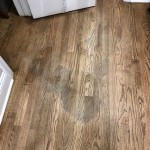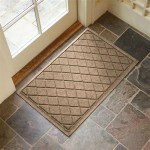Vinyl herringbone flooring is a popular choice for many homeowners and businesses due to its durability, affordability, and stylish design. The herringbone pattern adds a unique visual interest to any room, and the vinyl material makes it a great choice for those who want a floor that is easy to clean and maintain. If you’re considering installing vinyl herringbone flooring in your home or business, this guide will provide you with all the information you need to get started.
Choosing the Right Vinyl Herringbone Flooring
The first step in installing vinyl herringbone flooring is choosing the right product. When selecting a vinyl flooring product, you’ll want to consider factors such as the thickness, color, and pattern. Most vinyl herringbone flooring products come in a variety of thicknesses and are available in several popular colors and patterns. You’ll also want to take into account the size of the room you’re installing the flooring in, as well as its intended use. For example, if you plan on installing the flooring in a kitchen or bathroom, you’ll want to choose a product that is waterproof and slip-resistant.
Preparing Your Subfloor
Once you’ve chosen your vinyl herringbone flooring, you’ll need to prepare the subfloor for installation. Start by making sure the subfloor is clean, dry, and free of debris. If the subfloor is uneven, you’ll need to level it using a self-leveling compound. Next, you’ll need to check for any cracks or gaps that need to be filled, and make sure the subfloor is properly sealed. Once the subfloor is prepared, you’ll be ready to begin laying the vinyl herringbone flooring.
Laying the Vinyl Herringbone Flooring
Installing vinyl herringbone flooring is a straightforward process, but it does require some precision and patience. Start by laying the first row of tiles along one wall, making sure to line them up with the herringbone pattern. If you are using a glue-down installation method, you’ll need to apply an adhesive to the back of each tile before laying it. Once the first row is laid, you can continue laying the rest of the tiles, ensuring the herringbone pattern is aligned. You’ll also need to allow the adhesive to dry before walking on the floor.
Finishing the Job
Once all the tiles are laid, you’ll need to finish the job. This involves ensuring the grout between the tiles is properly sealed, and that any exposed edges are sealed as well. You may also want to apply a sealant or wax to the tiles to make them easier to clean and maintain. And finally, you’ll want to install any necessary trim pieces, such as edging, around the perimeter of the room.
Caring for Your Vinyl Herringbone Floor
Once your vinyl herringbone floor is installed, you’ll want to make sure you take good care of it. Regular sweeping and mopping will help keep the floor clean and free of debris. You’ll also want to use a pH-neutral cleaning solution to avoid damaging the floor. And finally, you’ll want to avoid abrasive cleaning materials, as these can damage the vinyl flooring.
Conclusion
Installing vinyl herringbone flooring is a great way to add style and durability to any room. With the right preparation and care, your vinyl herringbone flooring can last for many years. To get started, choose the right product, prepare the subfloor, and lay the tiles according to the herringbone pattern. Once the floor is installed, make sure to properly care for it by sweeping and mopping regularly, and using a pH-neutral cleaning solution.












Related Posts








